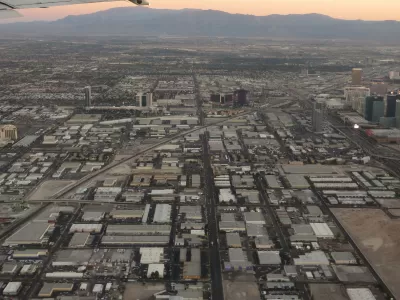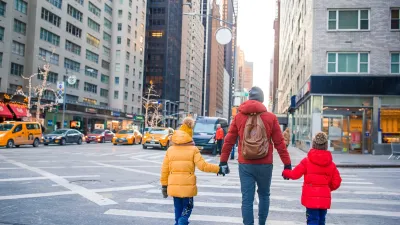New suburbs continue to expand into previously undeveloped areas, putting strain on local resources.

"Between 2001 and 2019, the built-up landscape of America — buildings, roads and other structures — has expanded into previously undeveloped areas, adding more than 14,000 square miles of new development across the contiguous United States," report Zach Levitt and Jess Eng.
"Suburbs are sprawling out in Arizona and Nevada as industries move to the Sun Belt, retirement communities are popping up in Florida as the baby boomer generation ages, and oil and natural gas wells have emerged across North Dakota and West Texas." Meanwhile, "[a]s cities on the coasts have become more and more expensive, there has been an influx of people and industries into other parts of the country, creating the perfect conditions for rapid sprawl into available land in the South and West." But recent growth has led to sharp increases in housing costs, too. "Across the country, housing prices have risen by almost 25 percent since March 2020, creating bidding wars for any house that goes on the market in cities like Boise." Reno's "median price for an existing single-family home has recently reached half a million dollars."
But this comes at a cost, write Levitt and Eng. "Researchers and experts have said explosive urban development was a contributing factor for the intense flooding after Hurricane Harvey devastated Houston in 2017," partly due to an increase in impervious surfaces that prevent floodwater from draining away. At the same time, cities in the Southwest struggle to maintain adequate water supplies for their fast-growing populations as reservoirs dwindle to historic lows.
FULL STORY: Where America’s developed areas are growing: ‘Way off into the horizon’

Planetizen Federal Action Tracker
A weekly monitor of how Trump’s orders and actions are impacting planners and planning in America.

Map: Where Senate Republicans Want to Sell Your Public Lands
For public land advocates, the Senate Republicans’ proposal to sell millions of acres of public land in the West is “the biggest fight of their careers.”

Restaurant Patios Were a Pandemic Win — Why Were They so Hard to Keep?
Social distancing requirements and changes in travel patterns prompted cities to pilot new uses for street and sidewalk space. Then it got complicated.

California Homeless Arrests, Citations Spike After Ruling
An investigation reveals that anti-homeless actions increased up to 500% after Grants Pass v. Johnson — even in cities claiming no policy change.

Albuquerque Route 66 Motels Become Affordable Housing
A $4 million city fund is incentivizing developers to breathe new life into derelict midcentury motels.

DC Area County Eliminates Bus Fares
Montgomery County joins a growing trend of making transit free.
Urban Design for Planners 1: Software Tools
This six-course series explores essential urban design concepts using open source software and equips planners with the tools they need to participate fully in the urban design process.
Planning for Universal Design
Learn the tools for implementing Universal Design in planning regulations.
Heyer Gruel & Associates PA
JM Goldson LLC
Custer County Colorado
City of Camden Redevelopment Agency
City of Astoria
Transportation Research & Education Center (TREC) at Portland State University
Camden Redevelopment Agency
City of Claremont
Municipality of Princeton (NJ)





























